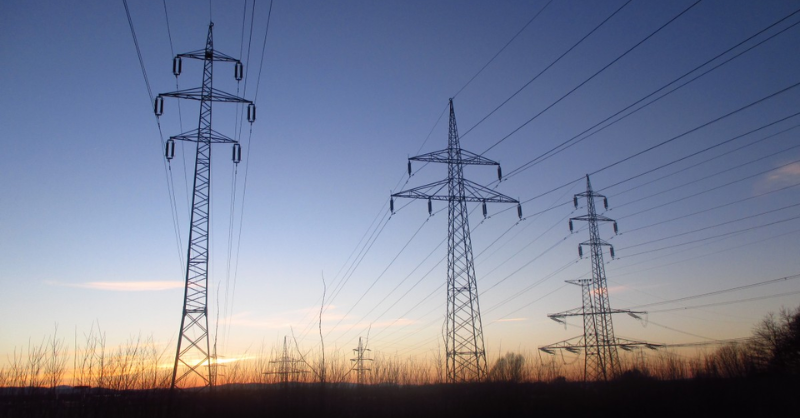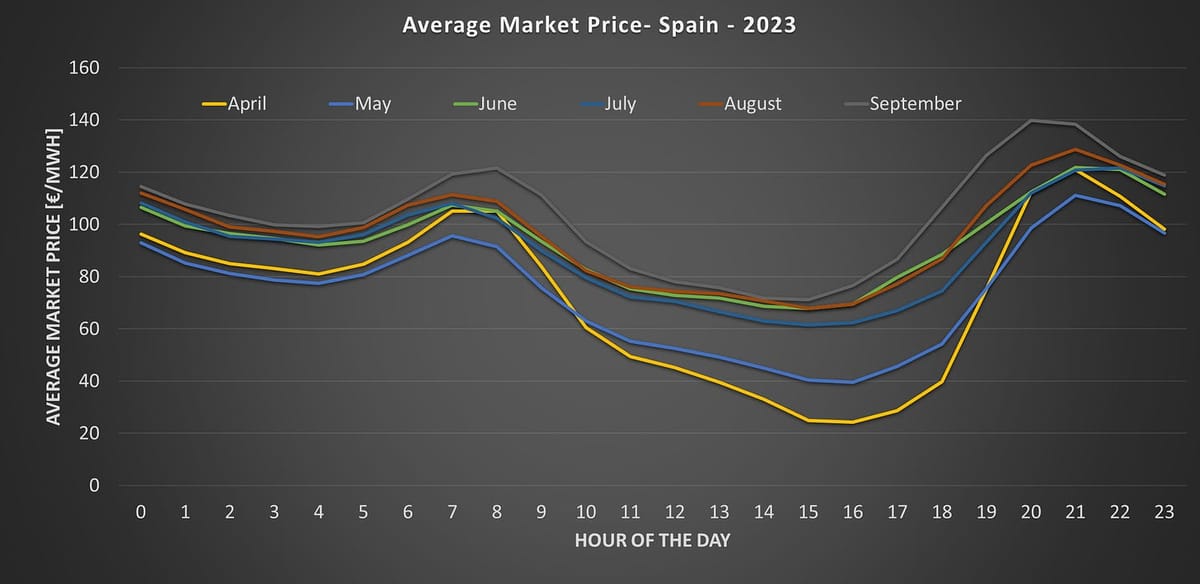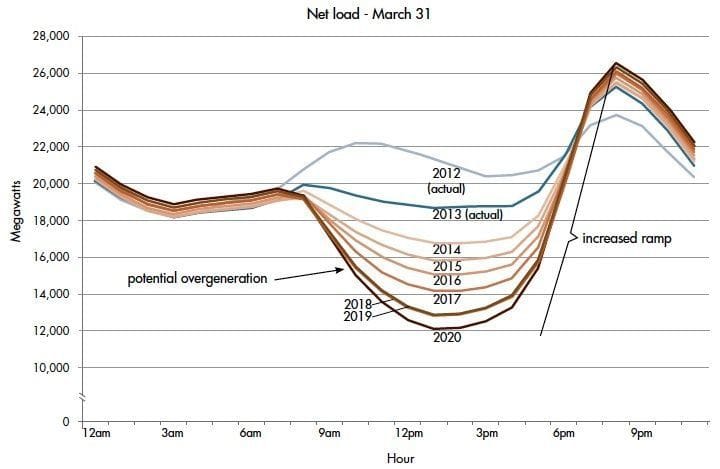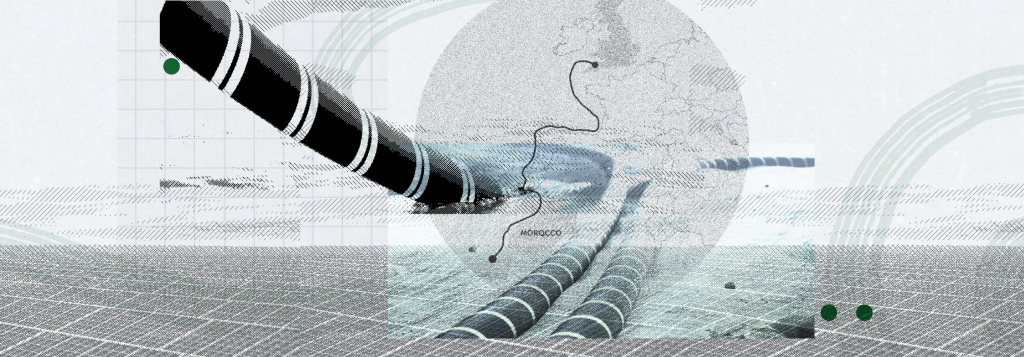
Can new technology 'save' our transmission grids?
One new (ish) type of interconnector is attracting more attention. Ultra High Voltage DC (UHVDC) enables electricity to be transported vast distances with low line losses. Could this be our best solution?
More of us are starting to understand that for many countries the biggest electricity decarbonisation challenge is not building more renewables. It's making the grid that can accommodate them.
The solution has many aspects, including grid stability investment, battery storage, and interconnectors.
One new (ish) type of interconnector is attracting more attention. These are known as Ultra High Voltage DC or UHVDC and they enable electricity to be transported vast distances with low line losses. Potentially enabling us to power one region's evening peak, with solar and wind electricity generated thousands of km away. This sounds appealing.
So why is this 'new' technology probably not the magic solution?

Can we use the afternoon sun in Perth to power the evening peak in Sydney?
What Caught Our Eye this week is a question from an excellent (as always) video from the Engineering with Rosie series. Can we use the afternoon sun in Perth (or the West Coast or the UK) to power the evening peak in Sydney (or Prague or New York)?

Let's start at the beginning. What is the problem we are trying to solve?
That's easy. For all sorts of reasons, renewables (wind and solar) are becoming the dominant source of electricity generation for many countries. Renewables bring lots of advantages.
But they also bring a challenge. They are by definition variable, only generating electricity when the wind blows and the sun shines.
This is not as big a problem as many people would like you to believe. We have solutions. Solutions that are already working in locations around the world.
One of these solutions is interconnectors.
When your wind and solar is not generating, simply bring in electricity from somewhere else. At the risk of being over simplistic, it will always be windy or sunny somewhere.
And interconnectors also bring in surplus electricity from hydro and nuclear. This already happens a lot in Europe. And it's happening more in Asia. But this is currently tough for longer distances.

Conceptually, it would be great to use the time zone opportunity. Power the evening peak in Sydney, with solar from Perth. Or New York using Californian solar. Or the densely populated Chinese coastal cities with solar and wind from the west of the country.
One big technical challenge is line losses.
The longer the interconnector, the more electricity that is lost as we transport it the vast distances involved to cross continents.
As Rosie has highlighted, China has solved this. They use a technology called, yes, you guessed it, Ultra High Voltage DC or UHVDC.
You don't need to understand how it works, you just need to know that it allows electricity to be moved thousands of km, with low line losses. And that it's technologically complex, and expensive. Which is partly why of the three possible applications quoted above, only the Chinese one is actually happening right now.
But, ignoring the political issue of using yet another Chinese developed technology, it sounds like a good solution for all sorts of places. Over build where solar and wind is cheapest, and move the electricity to where demand (and price) is highest.
Is this an example of where a new (ish) technology could be a game changer in terms of our renewables build out?
Before we explain why the answer is probably no, lets explain a bit more about the evening peak.
Evening peaks and the electricity ducks
Regular readers will know about electricity ducks. This refers to the shape of the demand curve for non renewable electricity. It used to be a California phenomena, but now we see it across Europe as well.

As the chart below shows, we currently need alternative (non wind & solar) sources early in the day. And then cheap solar kicks in, and we need less and less of our alternatives. And the average wholesale cost of the electricity gets cheaper and cheaper.
And then the evening peak kicks in, often just as solar generation starts to fade. And the chart below shows the massive ramp up in supply we need.

Why is this a problem? Because many of the current alternative supply sources don't cope as well with rapid ramp ups. It's ok for batteries, but not so good for fossil fuel power stations.
Which is why long distance interconnectors, bringing cheap solar in from other time zones, could really help. Which is why people are talking more about UHVDC interconnectors.
But, UHVDC also comes with challenges.
They are complex to build. And the country with the most expertise is China. And we know that many countries want less reliance on China, not more.
Plus, we have already seen how hard it is to get people to agree to new interconnectors - the Champlain Hudson Power Express took many years to get built. As the E&E New story below points out, when planning started George W. Bush was president and Joe Biden was a senator.

And they are expensive. As Rosie points out in her video, a UHVDC interconnector from Western Australia to the East Coast would cost a minimum of $4bn, plus work at either end. Not a massive amount by the standard of some other incredibly large energy projects, but still a big chunk of money.
And what else could you get for that money - probably enough Li Ion batteries (around 20GW hours) to cover the Australian East Coast evening peak.
Which brings us to Rosie's really useful rules of thumb.
UHVDC interconnectors really work best when you have a lot of surplus low carbon electricity somewhere else, and that somewhere else is over 1,000 km away, preferably in very different time zone. And where you don't already have a half decent interconnector system, and you don't have fairly abundant local renewable electricity generation.
Some fairly tough hurdles.
I don't mean this to sound too negative. You could still decide that UHVDC is good for your grid, if diversification of supply is important. So say, you are the UK and you use a lot of surplus nuclear from France and Hydro from Norway, but you worry that these supplies could be less secure in the future. Say, the Norwegians want to use more of their hydro electricity locally.

In that situation you might want to explore bringing cheap and abundant solar up from Morocco. And that would definitely require a UHVDC interconnector.

The bottom line is that it's likely that UHVDC interconnectors will find applications outside of China, but don't rely on this new technology to fix all of our electricity supply challenges. But also don't worry, as battery storage gets cheaper, and smart grids become more common, we may find that we need UHVDC less than we first thought.
Something a little more bespoke?
Get in touch if there is a particular topic you would like us to write on. Just for you.
Contact us
Please read: important legal stuff.





